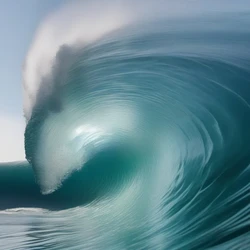- cross-posted to:
- hackernews@lemmy.bestiver.se
- cross-posted to:
- hackernews@lemmy.bestiver.se
cross-posted from: https://lemmy.bestiver.se/post/668839
Officials from Indonesia’s nuclear energy regulatory agency have traced the source of contamination to a steel manufacturer in the Cikande industrial area known as Peter Metal Technology, or PMT. Some of the highest levels of contamination detected in the area were reportedly found in the company’s furnace, which is about 1.5 miles southwest of the BMS Foods facility where the shrimp was processed.
Investigators think that radioactive dust was released into the environment after PMT inadvertently smelted scrap metal containing cesium-137. “Because it’s airborne, the contamination can be carried by wind,” said Bara Khrishna Hasibuan, a senior adviser to Indonesia’s Ministry of Food Affairs, at a Sept. 30 press conference.
Scrap metal was commonly used as a raw material by PMT, according to the Indonesian outlet Antara News. It’s unclear how it may have become contaminated with cesium-137. Biegalski, whose area of expertise includes nuclear forensics, told CR that the “easiest explanation” is that a medical or industrial device containing cesium-137 was inadvertently reprocessed as scrap metal. The radioactive material could have become gaseous after entering the PMT furnace and then been released from the facility’s smokestack, he said.
They should repeat “inadvertently” a third time, then i could start believing it.
Scrap metal was commonly used as a raw material by PMT, according to the Indonesian outlet Antara News. It’s unclear how it may have become contaminated with cesium-137. Biegalski, whose area of expertise includes nuclear forensics, told CR that the “easiest explanation” is that a medical or industrial device containing cesium-137 was inadvertently reprocessed as scrap metal
https://en.wikipedia.org/wiki/Goiânia_accident
The Goiânia accident [ɡoˈjɐ̃njə] was a radioactive contamination accident that occurred on September 13, 1987, in Goiânia, Goiás, Brazil, after an unsecured radiotherapy source was stolen from an abandoned hospital site in the city. It was subsequently handled by many people, resulting in four deaths. About 112,000 people were examined for radioactive contamination and 249 of them were found to have been contaminated.[1][2]
The radiation source in the Goiânia accident was a small capsule containing about 93 grams (3.3 oz) of highly radioactive caesium chloride (a caesium salt) made with the radioactive isotope caesium-137, and encased in a shielding canister made of lead and steel.
On September 13, 1987, the guard tasked with protecting the site did not show up for work. Roberto dos Santos Alves and Wagner Mota Pereira illegally entered the partially demolished IGR site.[7] They partially disassembled the teletherapy unit and placed the source assembly in a wheelbarrow to later take to Roberto’s home. They thought they might get some scrap value for the unit.[1]
https://en.wikipedia.org/wiki/Ciudad_Juárez_cobalt-60_contamination_incident
A radioactive contamination incident occurred in 1984 in Ciudad Juárez, Mexico, originating from a radiation therapy unit purchased by a private medical company and subsequently dismantled for lack of personnel to operate it. The radioactive material, cobalt-60, ended up in a junkyard, where it was sold to foundries that inadvertently melted it with other metals and produced about 6,000 tons of contaminated rebar.[1] These were distributed in 17 Mexican states and several cities in the United States. It is estimated that 4,000 people were exposed to radiation as a result of this incident.[1]
Detection of radioactive material
On January 16, 1984, a radiation detector at Los Alamos National Laboratory in the U.S. state of New Mexico detected the presence of radioactivity in the vicinity. The detector went on because a truck carrying rebar produced by Achisa had taken an accidental detour and passed through the entrance and exit gate of the laboratory’s LAMPF technical area.
https://en.wikipedia.org/wiki/Samut_Prakan_radiation_accident
A radiation accident occurred in Samut Prakan Province, Thailand in January–February 2000. The accident happened when an insecurely stored unlicensed cobalt-60 radiation source was recovered by scrap metal collectors who, together with a scrapyard worker, subsequently dismantled the container, unknowingly exposing themselves and others nearby to ionizing radiation. Over the following weeks, those exposed developed symptoms of radiation sickness and eventually sought medical attention. The Office of Atomic Energy for Peace (OAEP), Thailand’s nuclear regulatory agency, was notified when doctors came to suspect radiation injury, some 17 days after the initial exposure. The OAEP sent an emergency response team to locate and contain the radiation source, which was estimated to have an activity of 15.7 terabecquerels (420 Ci), and was eventually traced to its owner. Investigations found failure to ensure secure storage of the radiation source to be the root cause of the accident, which resulted in ten people being hospitalized for radiation injury, three of whom died, as well as the potentially significant exposure of 1,872 people.[1]
https://en.wikipedia.org/wiki/Theft_of_radioactive_material_in_Tammiku
The theft of radioactive material in Tammiku, often called the Tammiku nuclear accident, took place in 1994. Three brothers in Tammiku, Männiku, Saku Parish (Harju County), Estonia, who were scrap metal scavengers, entered a fenced area in the woods and broke into a small shed that was seemingly abandoned (after having had no success with entering a larger building inside the area), with stairs leading to an underground hall. The brothers did not know that the buildings were nuclear waste storage facilities (although there were signs at the gate, they did not see them because they had climbed over the fence elsewhere). One of the brothers, Ivan, suffered a crush injury when a drum fell onto him. The brothers placed some pieces of metal into their pockets and went home, planning to return later. Ivan placed a metal cylinder in his pocket, not knowing that it was a strong caesium-137 radioactive source that was released from a container broken by the falling drum.[1] He received a 4,000 rad whole-body dose and died 12 days later.[2] Only after Ivan’s family’s dog died, and Ivan’s stepson showed radiation burn of his hands (as a result of briefly touching the cylinder), was the cause of Ivan’s death identified. The delay in information was due to the brothers’ reluctance to admitting to the break-in.[3]
While we’ve often — not always — managed to label radiation sources, in general, people scrapping metal stuff, often stealing it, haven’t done the best job of understanding or following related rules.
All of this from a steel plant’s smoke stack radioactive plume, from the melting down of medical equipment? …I’m still suspicious of the containers themselves. But, that’s just me.
It’s a reasonable explanation.
Cesium is highly radioactive, and the sensors are very sensitive.
When Iceland had the Huefaleflefthaflafla volcano outbreak, I could smell the sulphur from my house. In Norway. More than 1500 km / 900 miles across half the atlantic ocean.
So radioactive smoke being detectable 1.5 miles away makes sense to me.
Eyjafjallajökull
Roughly pronounced: AY-yuh-FYAT-la-YUH-kuh-dl
Felt like every tour guide was drilling this into us during our five day stay there.
I suppose that both the cloves and shrimp have been traced to the same geographic area it stands to reason that this is indeed correct. It’s just so strange and the spices contamination isn’t as fully explained. Maybe if I saw a map the plume theory would make more sense. But at that rate it seems the whole island may be experiencing this issue which is very unfortunate.
IF it’s a salt, THEN it could easily be dissolved into whatever dissolves that salt ( like, you know, water ).
Scrap gets rained on, & salts washed away, going into the waterways…
I’m not saying that is what happened, this time, but I am saying that if they’re using radioactive cesium salt, then they’re creating extra risk, that wouldn’t be the case if they were using a solid pellet of metal.
( this, obviously, applies to the spent fuel from any thorium-salt nuclear reactor, too: salts dissolve! Containment that is absolutely proof against that, for the entire required duration, … may not be possible, for some long-duration isotopes, right? )
That it isn’t an international-criminal-law offense to have such materials immediately taken to radioactive-waste-management, … is … morally-criminal.
Allowing it to just happen, when normal people aren’t competent to either recognize, or deal-with, nuclear-radiation…
Typical rejection-of-accountability & rejection-of-responsibility, though, of authority, isn’t it?
Contemptible.
_ /\ _
Not every salt is easily soluble in water. Salt in a chemical sense is a compound made up of multiple ions. Marble and pretty much all rocks/minerals are also salts in a chemical sense and you don’t see our mountains being washed away by one rainfall. So saying they use a thorium salt is not in itself a problem, depending on which salt they use.
I couldn’t find any definitive answer, but from what I found on Wikipedia is that they mostly use Thorium dioxide at the moment, which is practically insoluble in water and alkaline, by slightly soluble in acids.
So no, salts don’t all dissolve. It completely depends on the specific salt and its properties.
But yeah, nuclear industry in general is pretty hands off with regard to accountability and taking care of the long time effects.
I knew, when writing, that some salts are functionally insoluable ( lithium-fluoride, I’d read, pretty-much doesn’t dissolve in water ).
I’d hoped that I’d phrased it carefully-enough, but obviously didn’t.
Definitely thank you for identifying that the salt specific to thorium-salt reactors isn’t at room temperature going to be easily dissolveable into our environment…
but … I’ve also learned that hot-chemistry can be drastically different from room-temperature chemistry, & after all the … gaslighting … of various industries, through the past decades…
I want systematic & thorough testing to see what that salt can react with, under its entire temperature & pressure regime, before anybody signs-off on it.
“hands off” is a very polite way of saying it, Hoomin…
& I’d never thought of marble as a salt, you got me on that point!
_ /\ _
Na na na na na Shrimp Man! And Prawn the exoskeletoned wonder!
This is totally a kaiju-causing event and I expect the results looking like a giant guy in a big costume trying to hug things, but the eye holes are too small and keeps missing.






